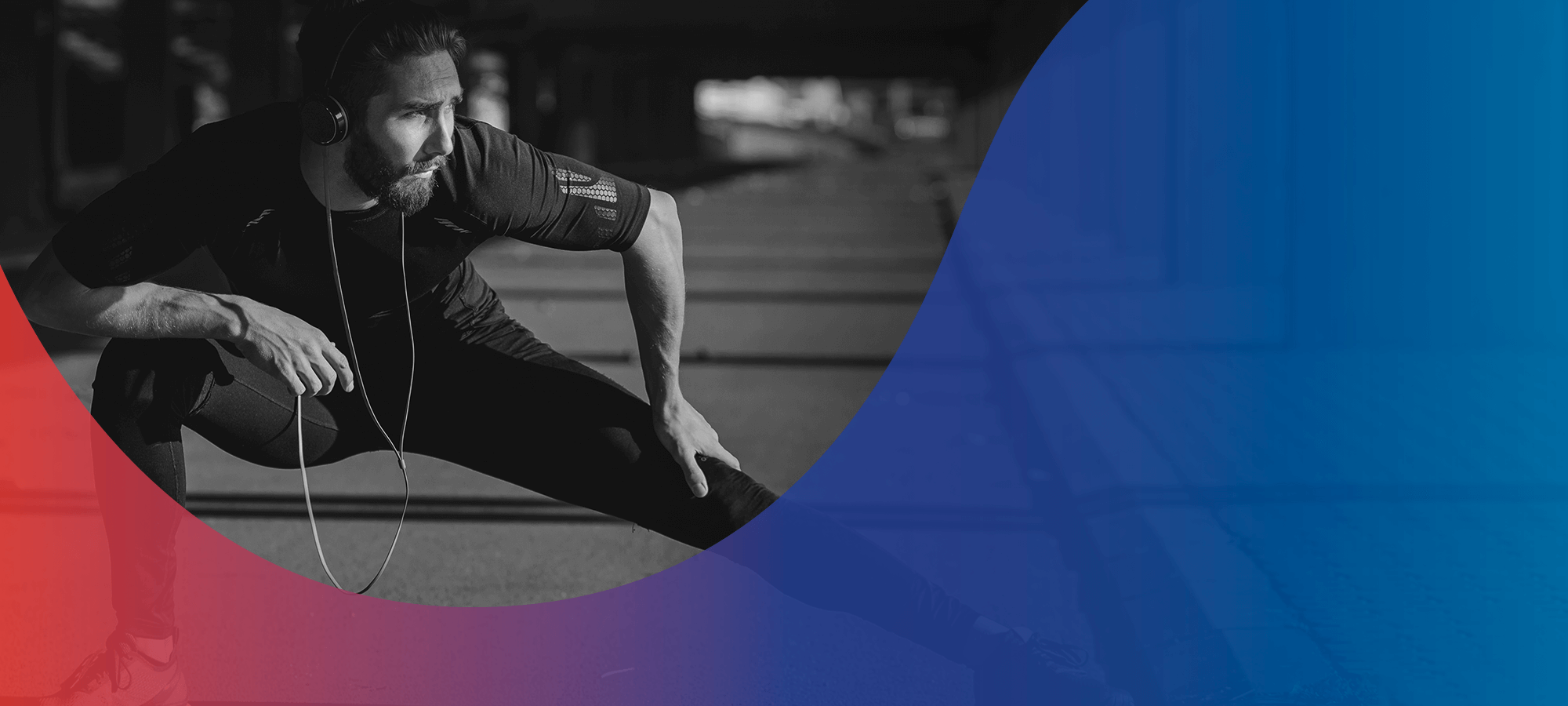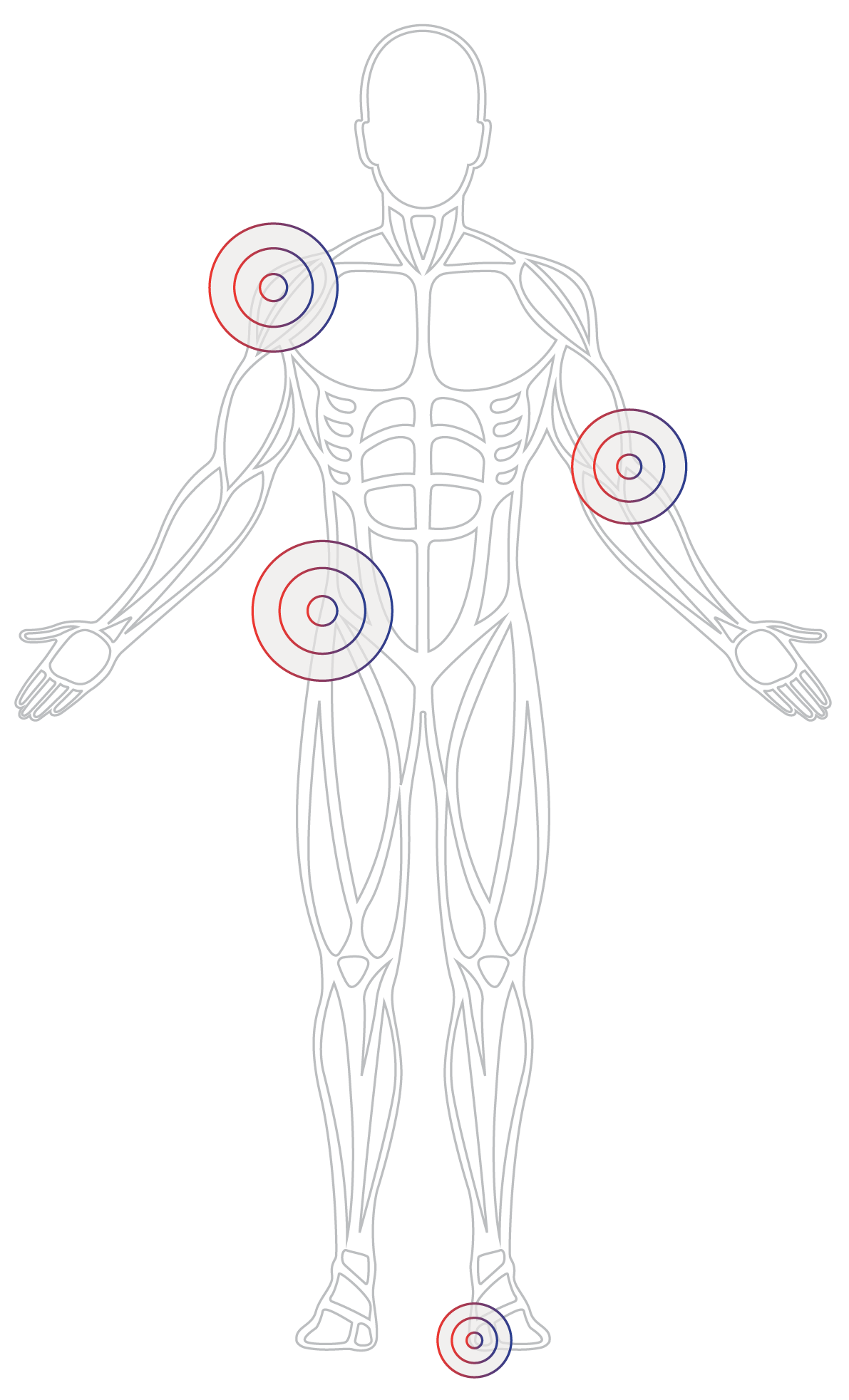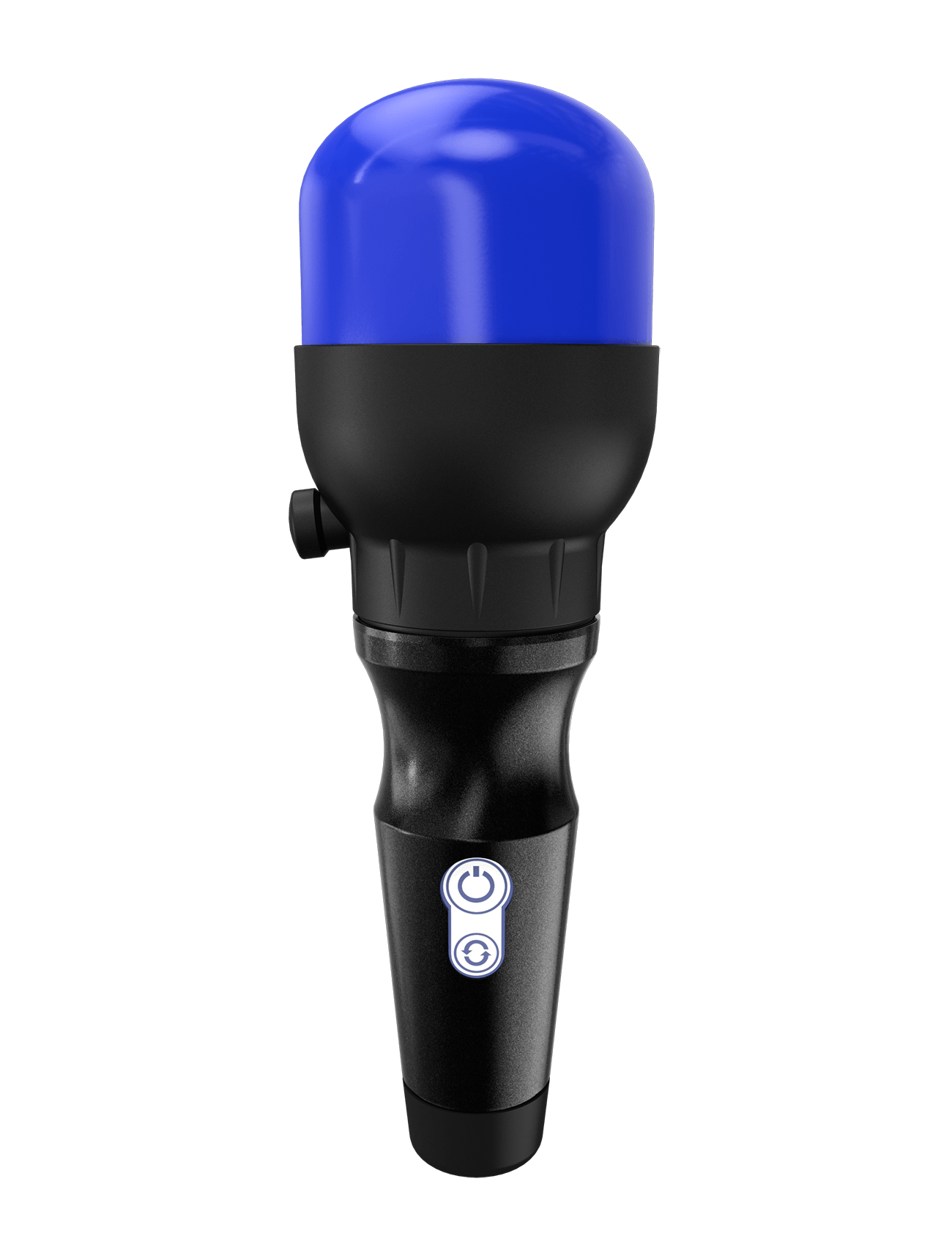
TheraWave™

80% of patients found success with pain in the foot and shoulder with shock wave therapy2
15-20 minute treatment requiring no recovery time
Non-surgical and non-invasive alternative
The majority of people report full recovery after 3-6 months
Handpieces / Applications
Frequently Asked Questions
TheraWave is a 510(k) cleared device that delivers low-intensity extracorporeal shock wave therapy (LI-ESWT), offering non-invasive solutions to relieve muscle aches and pains – no needles or prescription drugs necessary. Ideal for those who require assistance with recovery, TheraWave’s in-office treatments take approximately 15-20 minutes and require no additional downtime, allowing people to get back to their fitness and wellness journey quickly.
First introduced as a treatment for kidney stones in the 1970s, shock wave technology has evolved to successfully address various conditions associated with muscle injuries. LI-ESWT uses acoustic waves to carry energy to targeted areas of the body, inducing an inflammatory response to the affected area, and activating connective tissue. The treatment offers a non-surgical and non-invasive alternative for muscle relief – no needles or prescription drugs are necessary.
TheraWave’s LI-ESWT technology uses acoustic waves to carry energy to targeted areas of the body, offering a non-surgical and non-invasive alternative for muscle pain relief, which is traditionally treated with injections or prescription drugs. LI-ESWT provides several benefits to patients when compared to both injections and medications. Neither option provides long-term support for pain relief, each requiring continuous treatment over time and in the case of injections, downtime is required after treatment.
TheraWave’s LI-ESWT technology treats acute muscle pain and discomfort and can be applied from the shoulder to the wrist and the hip to the foot.
Yes. In a clinical study of people with foot pain, shock wave therapy showed increased activity and function of 67%1
80% of patients treated with shock wave therapy were relieved of (foot/shoulder) pain2
Yes, TheraWave received 510K clearance (K210166) from the U.S. Food and Drug Administration to relieve minor muscle aches and pains, temporary increase in local blood circulation and activation of connective tissue in the upper and lower extremities. Treatment can be applied to the upper extremities, from the shoulder to the wrist, and to the lower extremities from the hip to the foot.
TheraWave is administered as a quick 15-minute, in-office treatment. It is an experience that requires no topical anesthetic or additional downtime, allowing people to get back to their fitness and wellness journey quickly. While this is a non-invasive, non-surgical treatment, you may experience minimal discomfort depending on your condition. Patients often describe the feeling of LI-ESWT treatment as small pulses moving across the skin.
Each individual condition has its own unique treatment plan. Most conditions will require multiple sessions over a period of a few months.
TheraWave employs LI-EWST shock wave therapy produced by our engineered applicator that enables treatment of larger body areas deeper into the tissue (up to 135 mm), versus other shock wave technologies which are much shallower (15-30mm), requiring topical anesthetics.
When you arrive at the clinic, a practitioner will conduct a thorough exam to determine the best course of treatment for your individual condition. If LI-ESWT is unsuitable for your condition, our practitioners can refer you to a physician to form an alternative diagnosis and treatment plan.
TheraWave’s in-office treatments take approximately 15-20 minutes and require no additional downtime. Depending on your daily fitness routine, it may be recommended to reduce intense fitness activities by up to 50% to ensure an optimal recovery process. Depending on your recovery process following the first treatment, you may return to your normal fitness and wellness journey.
Prices for TheraWave treatments vary depending on provider and treatment area and typically range from $800-1000 per session. Contact your clinic to learn more.
TheraWave is not covered by insurance.
There are a few. Do not use TheraWave as a treatment if you are experiencing any of the below contraindications:
- Patient has a pacemaker implanted in the shoulder of the side to be treated with Shock Wave Therapy.
- Patient has malignancy at the area to be treated.
- Application at growth plates in children and young adults.
- Pregnancy
- Any implanted device that releases substances or medications to the periphery (such as insulin pump) and is implanted in the area to be treated with shock wave therapy. (Orthopedic implants are not included in this section, and it’s common and even recommended to treat non-union with shock wave while the metal implant remains in place.)
- Patient has infection at the area to be treated, d/t the possibility of infection spreading.
- Patient has severe tears of tendon or fascia (due to inefficiency in shock wave treatment in these cases).
- Patient with coagulation problems as well as treatment with anti-coagulants.
